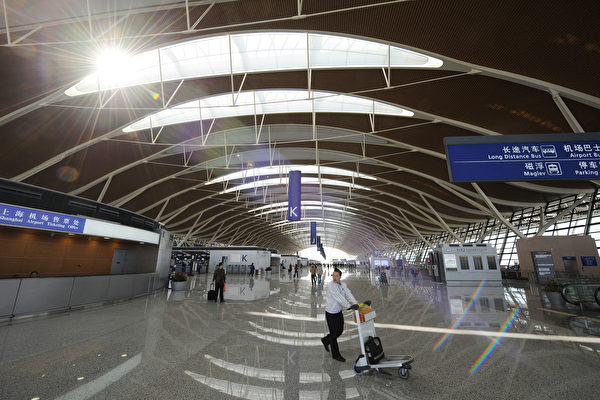Amidst the backdrop of a sluggish Chinese economy and downgraded consumer spending, many once bustling international airports in China now appear deserted. Recently, a passenger from Shanghai captured footage of the international satellite hall at Shanghai Pudong International Airport, showing a sparse number of travelers, closed shops, and empty VIP lounges, resembling a “ghost city.” This unusual phenomenon has not only left passengers puzzled but has also raised doubts about why the airport does not close inefficient operating areas.
Renowned Shanghai blogger with hundreds of thousands of followers on various social media platforms, known as “Master Mei,” set off for a trip to South Korea with his family from Pudong Airport on June 9. Upon entering the airport, he recorded real scenes of the international satellite hall and duty-free shops.
Upon their arrival at the international flight satellite hall at Pudong Airport around 10 a.m., they found very few passengers. The vast international departure hall and the nearby duty-free shops were almost deserted, with some shops even closed for business.
Describing the scene as desolate, “Master Mei” mentioned that a bottle of Maotai liquor in the duty-free shop was priced at 3500 yuan. He pointed out that Maotai prices have dropped below that level in the market, with bottles selling for 2000 yuan or less, making it questionable how they could sell them for 3500 yuan at the duty-free shop.
The footage he captured showed the immense space of the international flight area’s satellite hall, with both upper and lower floors appearing empty. Two visitors quickly left upon finding no shops open while trying to go upstairs. “Master Mei” did not comment much on the condition of the domestic flight area satellite hall.
Continuing to Starbucks coffee shop and the nearby cosmetics duty-free store, “Master Mei” found them deserted, with barely any customers present. The “International, Hong Kong, Macao and Taiwan Inquiry Counter” in the central hall was equally empty and ignored. He further observed that the area’s air conditioning was insufficient, intensifying the stuffy feeling, speculating that this might be due to the airport trying to save on electricity costs by not lowering the temperature enough.
This phenomenon left “Master Mei” perplexed, questioning why the departure gates were set up so far in the satellite hall. He wondered why they did not just close the satellite hall. He pondered whether leaving it unused would lead to neglect, drawing parallels to equipment like elevators becoming unusable if left inactive. This raised uncertainties about the reasons for not closing the satellite hall, with potential factors remaining unknown.
He also mentioned that his family enjoyed the VIP lounge service. Originally, there were two VIP lounges for the two international flights (153, 170), with lounge 153 already out of operation, as indicated by a notice on its door.
Upon visiting lounge 170, “Master Mei” found only three scattered groups of travelers besides his family in the entire VIP lounge.
The emptiness observed at Pudong International Airport is not an isolated case. Several bloggers who had firsthand experiences also showcased similar scenes at other airports in China through videos.
On April 27, a blogger captured the now desolate scenes of the once bustling terminal building at Shanghai Hongqiao Airport.
On April 26, in the afternoon at 2 p.m., another internet user recorded the deserted waiting hall at Pudong International Airport, with almost all duty-free shops closed, lamenting, “The economic downturn is terrifying!”
In fact, the deserted phenomenon at major airports in China is not a recent development. On March 17 this year, a blogger described in a video the sparse international flights and the minimal number of foreign passengers during the supposed “peak” period at Pudong International Airport past 7 p.m. The once hour-long immigration process now only takes half an hour. The blogger even observed that it was only at Zhangjiang High-Tech Station on the subway from the airport to the city center where people began boarding, with plenty of empty seats still visible upon arriving at Lujiazui, leaving him incredulous.
These series of incidents align with the macroeconomic data in China. The performance data from the three major state-owned airlines in China for 2024 shows that they have been in the red for the fifth consecutive year. Despite China’s loosening of strict pandemic control measures in early 2023 and expanding unilateral visa-free policies to attract international travelers, the influx of foreign visitors has not returned to pre-pandemic levels. According to the latest statistics from official Chinese government sources, the number of foreign entries and exits in 2024 was 64.882 million, significantly lower than 97.675 million in 2019.
The desolate scenes at international airports not only reflect the downward trend of the Chinese economy but also indicate the current impacts on international business and travel, sparking continuous attention on China’s future economic trajectory and degree of openness to the outside world.

